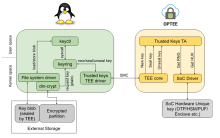Yes. Just because Wine runs on a non-Windows OS doesn't mean you're protected from viruses, trojans, and other forms of malware.
Wine is a compatibility layer that allows running Windows applications on Unix-like operating systems, such as Linux and macOS. It is not inherently designed to be "malware-compatible," and it doesn't facilitate the execution of malware by default.










